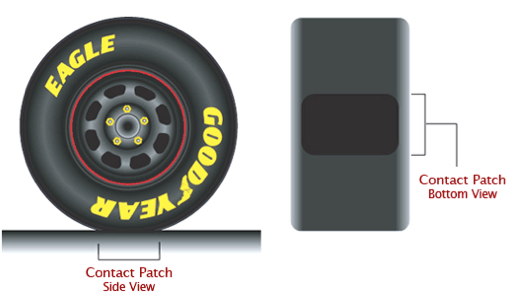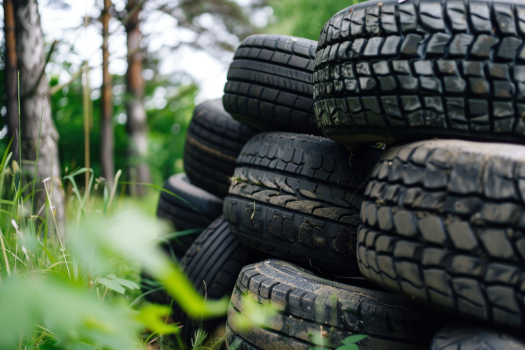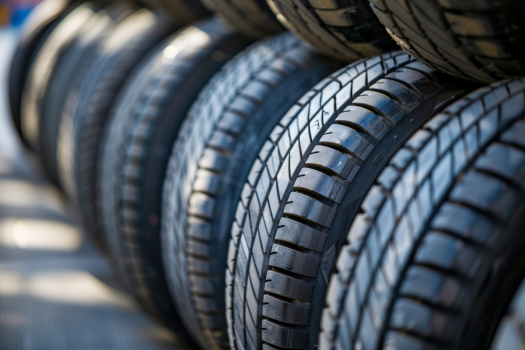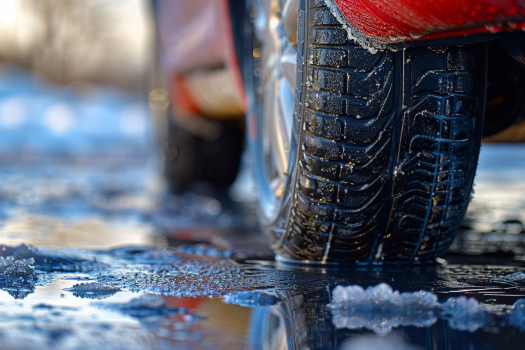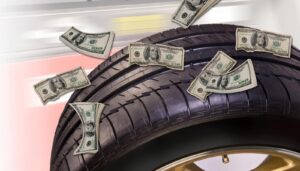Last Updated on April 21, 2024
Understanding the Importance of Tire Contact Patches
Just a few inches of your tires touch the road at any time. It’s as if your car is up on its toes. Those few inches are called the “contact patch.”
You might be surprised to hear just how important those few inches are in determining how your car handles when driving. The contact patch is your car’s connection to the road.
What is the Tire Contact Patch?
The tire contact patch, often called the “contact patch,” is where your vehicle’s tires come into direct contact with the road surface. It’s usually a small, rectangular-shaped portion of the tire’s tread that makes contact with the ground. The size of this patch varies depending on factors such as tire size, tire pressure, and the vehicle’s weight.
The Importance of the Contact Patch
The tire contact patch is a critical factor in several aspects of your vehicle’s performance and safety:
1. Grip and Traction
A larger contact patch means more rubber is in contact with the road. This increased surface area provides better grip and traction, especially in adverse weather conditions like rain or snow. It’s crucial for maintaining control over your vehicle.
2. Steering and Handling
The contact patch directly affects your car’s steering response and handling capabilities. An appropriately sized and balanced patch allows for more precise steering, enhancing your overall driving experience.
3. Braking Performance
When you hit the brakes, the tires rely on their contact patches to slow down the vehicle. A larger patch provides better braking performance, reducing the risk of accidents, particularly in emergencies.
4. Even Tire Wear
An optimized contact patch promotes even tire wear, extending the lifespan of your tires and saving you money in the long run.
Factors Affecting the Contact Patch
Several factors can influence the size and effectiveness of your tire’s contact patch:
a. Tire Size
The size of your tires significantly affects the contact patch. Wider tires typically have a larger contact area compared to narrower ones.
b. Tire Pressure
Proper tire pressure is crucial for maintaining the desired contact patch size. Over-inflated or under-inflated tires can lead to an uneven patch, affecting grip and safety.
c. Vehicle Weight
The weight of your vehicle compresses the tires, altering the shape of the contact patch. Heavier vehicles may require different tires or adjustments for optimal performance.
Maximizing Your Contact Patch
To ensure you’re getting the most out of your tire contact patch:
1. Check Tire Pressure Regularly
Regularly inspect and maintain the correct tire pressure according to your vehicle’s manufacturer recommendations. This simple step can significantly impact the size and shape of the contact patch.
2. Choose the Right Tires
Selecting the right tires for your vehicle and driving conditions is crucial. Consult with experts or refer to your vehicle’s manual for guidance.
3. Balance Your Load
When carrying heavy loads or passengers, ensure your vehicle’s weight distribution is even to maintain an optimal contact patch.
4. Rotate and Align
Regularly rotating your tires and ensuring proper alignment helps promote even wear across the contact patch.
High-Performance Tires
The wider the contact patch, the better your car can grip the road. High-performance tires are wide, and their contact patch looks like a wide horizontal strip on the highway. That wide strip holds your car on the road when cornering and adds stability when driving at high speeds in dry weather. On wet roads, that same wide footprint could generate hydroplaning, so tire designers add unique grooves to expel water out the sides of high-performance tires.
Most Tires are Built for Comfort
Most car tires are built to be thinner than high-performance tires and not nearly so vast. That gives them a long, thin contact patch instead of one wide and short. Why are most tires built that way? A long, thin contact patch provides a much smoother ride, even though handling won’t be as responsive. Noise reduction and improved wet weather performance are features of a thin, long contact patch.
Tire Traction and Rolling Resistance
The bigger and broader your contact patch, the more traction there is. Traction makes it that much harder to roll your car forward. Conversely, if your tires create just a tiny contact patch, there’s less traction, making it easier to move your car forward.
The lower the rolling resistance, the less fuel you will use to move your car. Common rolling resistance tires are designed to be rounder than other tires, so the tread doesn’t flatten as much where it touches the road. Common rolling resistance tires increase fuel mileage by keeping the contact patch small.
When it comes to your vehicle’s performance and safety, one crucial element often goes overlooked: the tire contact patch. This small area is the only part of your car that touches the road, making it vital for ensuring grip, stability, and overall safety while driving. In this guide, we’ll dive deep into understanding the tire contact patch, its significance, and how you can maximize it for a safer and more enjoyable driving experience.
Conclusion
Your tire contact patch might be small, but its impact on your driving experience and safety is enormous. Understanding how to maximize it through proper tire maintenance and selection can lead to better grip, enhanced handling, and increased safety on the road. Take these steps seriously and enjoy a smoother, safer ride.
Your tire’s contact patch is a small but critical area where your vehicle meets the road. It plays a massive role in determining your car’s grip, handling, and overall safety and understanding how the tire contact patch works can help you make informed decisions when choosing the right tires for your vehicle. For the best tire selection that maximizes your contact patch and ensures your safety on the road, head over to Tire Easy today.
Ready to upgrade your tires for optimal performance and safety?
Browse our wide range of high-quality tires at Tire Easy and ensure your vehicle’s tire contact patch is in top shape.
FAQs
How can I make my tires more grippy?
Maintain proper tire pressure, choose the right tires for your conditions, check the tread depth, rotate and align your tires, and drive smoothly.
How does tire tread design maximize friction or grip on the road?
Tread design uses sipes, grooves, blocks, edges, and tire compounds to enhance grip on road surfaces and conditions.
How many contact patches create traction?
A vehicle typically has four contact patches, one for each tire, creating traction and connecting the car to the road.
Does a larger tire contact patch mean more traction for the tire?
A larger contact patch provides more traction because it means more rubber is in contact with the road, improving grip during driving maneuvers.



